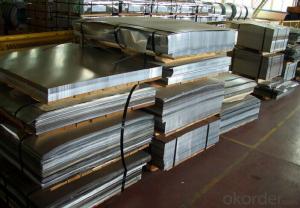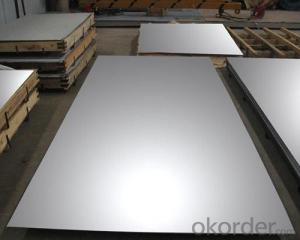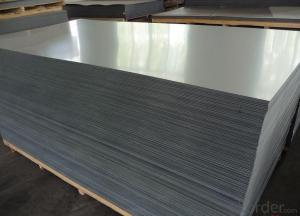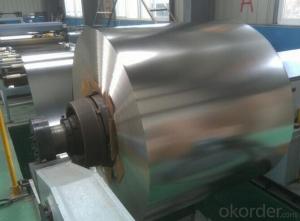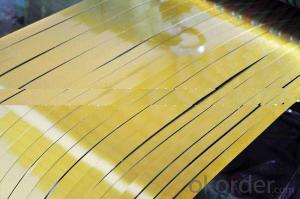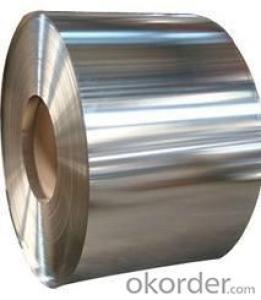Electrolytic Tinplate Sheets for Tin Cans Making
- Loading Port:
- Tianjin
- Payment Terms:
- TT OR LC
- Min Order Qty:
- 25 m.t
- Supply Capability:
- 7000 m.t/month
OKorder Service Pledge
OKorder Financial Service
You Might Also Like
1.Structure of Electrolytic Tinplate Sheets for Tin Cans Making Description
Electrolytic Tin Plate Coils and Sheets for Foods Metal Packaging, is one thin steel sheet with a coating of tin applied by electrolytic deposition. Tinplate made by this process is essentially a sandwich in which the central core is strip steel. This core is cleaned in a pickling solution and then fed through tanks containing electrolyte, where tin is deposited on both sides. As the strip passes between high-frequency electric induction coils, it is heated so that the tin coating melts and flows to form a lustrous coat.
2.Main Features of the Electrolytic Tinplate Sheets for Tin Cans Making
Appearance – Electrolytic Tin Plate is characterized by its beautiful metallic luster. Products with various kinds of surface roughness are produced by selecting the surface finish of the substrate steel sheet.
Paintability and printability – Electrolytic Tin Plates have excellent paintability and printability. Printing is beautifully finished using various lacquers and inks.
Formability and strength – Electrolytic Tin Plates have got very good formability and strength. By selecting a proper temper grade, appropriate formability is obtained for different applications as well as the required strength after forming.
Corrosion resistance – Tinplate has got good corrosion resistance. By selecting a proper coating weight, appropriate corrosion resistance is obtained against container contents. Coated items should meet 24 hour 5 % salt spray requirement.
Solderability and weldability – Electrolytic Tin Plates can be joined both by soldering or welding. These properties of tinplate are used for making various types of cans.
Hygienic – Tin coating provides good and non toxic barrier properties to protect food products from impurities, bacteria, moisture, light and odours.
Safe – Tinplate being low weight and high strength makes food cans easy to ship and transport.
Eco friendly – Tinplate offers 100 % recyclability.
Tin is not good for low temperature applications since it changes structure and loses adhesion when exposed to temperatures below – 40 deg C.
3.Electrolytic Tinplate Sheets for Tin Cans Making Images
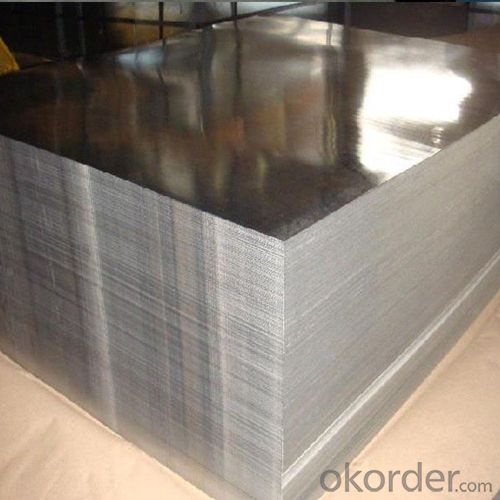
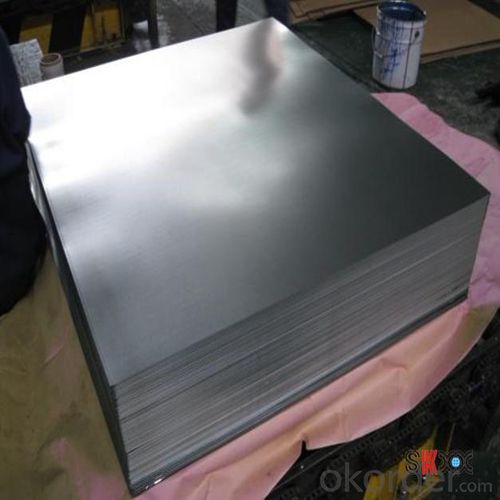

4.Electrolytic Tinplate Sheets for Tin Cans Making Specification
Standard | ISO 11949 -1995, GB/T2520-2000,JIS G3303,ASTM A623, BS EN 10202
|
Material | MR,SPCC |
Thickness | 0.15mm - 0.50mm |
Width | 600mm -1150mm |
Temper | T1-T5 |
Annealing | BA & CA |
Coil Inner Diameter | 508mm |
Weight | 6-10 tons/coil 1~1.7 tons/sheets bundle |
Passivation | 311 |
Oil | DOS |
Surface | Finish,bright,stone,matte,silver |
5.FAQ of Electrolytic Tinplate Sheets for Tin Cans Making
- How are the Electrolytic Tin Plates specified?
The Electrolytic Tin Plates are specified as per the steel base, extent of tempering, the coating weight, annealing method and the surface finish.
- How many types there are for base steels?
The base steels are of three types: Type MR, L, D
-What your tinplate material is used for ?
Tinplate is widely used for the packaging of products. Such as food cans,
beverage cans, pet cans, closures, general line cans and so on.
Printed Tinplate is offered!!
-How to place .an order or contact you ?
Please send us Email. we will give you a quick response in seconds .
- How is your quality ?
All our quality is prime even the secondary quality . We have many years experience
In this field with serious quality control standard . Advanced equipment, We welcome your visit to our factory .
- Q:What are the main applications of tinplate in the construction industry?
- Tinplate is commonly used in the construction industry for the production of roofing materials, such as tin roofs, due to its durability, corrosion resistance, and ability to withstand extreme weather conditions. It is also utilized for manufacturing gutters, downspouts, and flashings, providing protection against water damage. Additionally, tinplate is employed in the construction of HVAC systems, air ducts, and ventilation pipes, as it provides a reliable barrier against moisture and corrosion.
- Q:What are the different types of tinplate seams?
- There are three main types of tinplate seams: the lap seam, the double seam, and the triple seam. The lap seam is formed by overlapping the tinplate and soldering the edges together. The double seam involves folding the edges of the tinplate over each other and then crimping them together. Lastly, the triple seam is created by folding the edges of the tinplate over each other twice and crimping them together.
- Q:What are the applications of tinplate?
- Tinplate has a wide range of applications due to its protective and aesthetic properties. Common uses include packaging cans for food and beverages, aerosol containers, metal caps and closures, electrical components, and even decorative items. Its corrosion resistance and ability to maintain product freshness make it a popular choice for preserving and packaging various goods.
- Q:What is the cost of tinplate?
- The cost of tinplate varies depending on factors such as market demand, size, thickness, and quality.
- Q:Can tinplate packaging be used for household products?
- Yes, tinplate packaging can be used for household products. Tinplate has excellent durability, corrosion resistance, and can be easily shaped into various forms. It is commonly used for packaging food, beverages, and other household items such as cleaning products, cosmetics, and personal care items.
- Q:How does tinplate contribute to the preservation of tobacco products?
- Tinplate contributes to the preservation of tobacco products by providing a durable and protective packaging material. It helps to prevent exposure to moisture, light, and air, which can negatively impact the quality and freshness of tobacco. Tinplate's ability to maintain a consistent environment inside the packaging helps to extend the shelf life of tobacco products and preserve their flavor and aroma.
- Q:Can tinplate packaging be used for beverages?
- Yes, tinplate packaging can be used for beverages. Tinplate is commonly used for beverage cans as it provides a durable and protective barrier against moisture and oxygen, ensuring the quality and shelf life of the drink. Additionally, tinplate is recyclable, making it an environmentally friendly choice for packaging beverages.
- Q:What are the different ways to seal tinplate cans?
- There are several methods to seal tinplate cans. Some common ways include double seaming, soldering, welding, adhesive bonding, and using plastic or metal caps with sealing compounds. Each method has its own advantages and is chosen based on factors such as the type of product being packaged, desired shelf life, cost, and production requirements.
- Q:How does tinplate contribute to the safety of toys?
- Tinplate contributes to the safety of toys by providing a durable and non-toxic material that is resistant to corrosion and can withstand rough handling. It helps prevent sharp edges and ensures that toys do not break easily, reducing the risk of injuries during play. Additionally, tinplate is often used in the packaging of toys, offering a protective barrier that prevents contamination and prolongs the shelf life of the product.
- Q:How to quickly distinguish tinplate and ordinary substrate iron?
- Tinplate is the substrate, iron tin plating, tin bright, the substrate is dark, the substrate for a few days rust, and the two put together, the difference is great.
1. Manufacturer Overview |
|
|---|---|
| Location | |
| Year Established | |
| Annual Output Value | |
| Main Markets | |
| Company Certifications | |
2. Manufacturer Certificates |
|
|---|---|
| a) Certification Name | |
| Range | |
| Reference | |
| Validity Period | |
3. Manufacturer Capability |
|
|---|---|
| a)Trade Capacity | |
| Nearest Port | |
| Export Percentage | |
| No.of Employees in Trade Department | |
| Language Spoken: | |
| b)Factory Information | |
| Factory Size: | |
| No. of Production Lines | |
| Contract Manufacturing | |
| Product Price Range | |
Send your message to us
Electrolytic Tinplate Sheets for Tin Cans Making
- Loading Port:
- Tianjin
- Payment Terms:
- TT OR LC
- Min Order Qty:
- 25 m.t
- Supply Capability:
- 7000 m.t/month
OKorder Service Pledge
OKorder Financial Service
Similar products
New products
Hot products
Hot Searches
Related keywords
